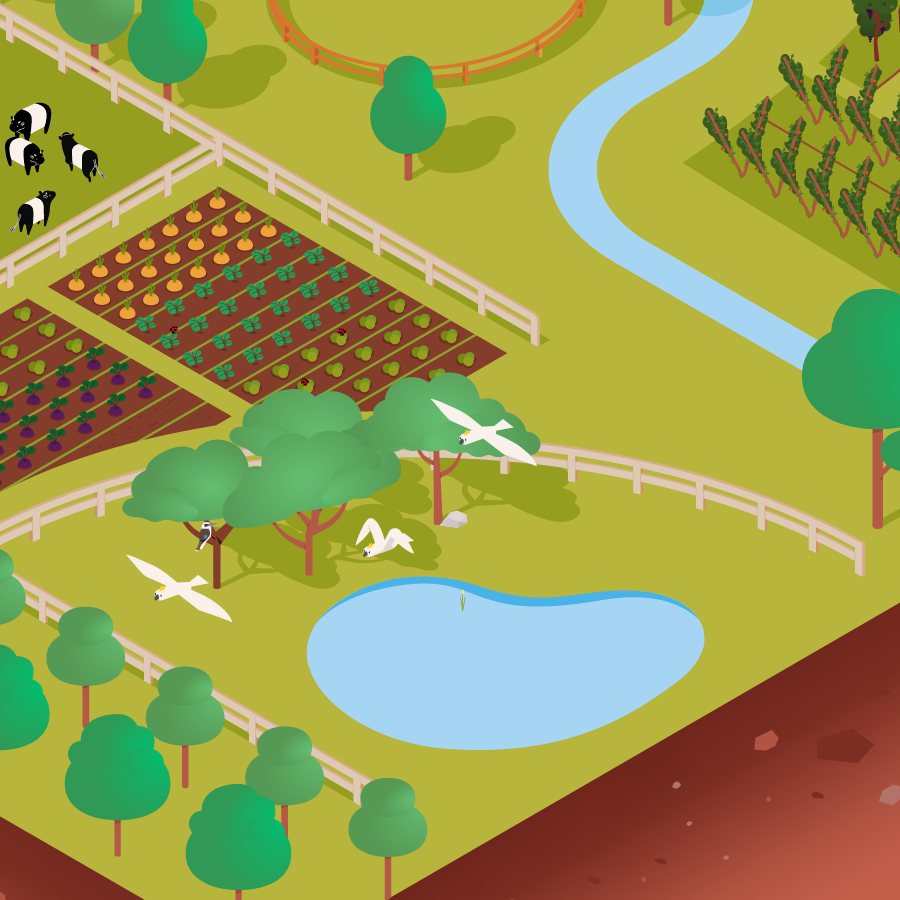
Microclimate
Large or small, microclimates are specific to a place.
A microclimate is an area inside a larger climate area with consistently warmer, or cooler temperatures, higher or lower humidity, and higher or lower wind speeds, affecting rates of evaporation and erosion.
Despite the name, a microclimate does not have to be tiny. While a microclimate can be a ‘warm spot’ or a ‘cool spot’ in your garden, it could also be a warm valley or a cool high plain within a larger climate region.
Regenerative farmers take advantage of microclimates in planning decisions about which crops to place where, when to undertake sowing and harvesting, moving animals, even placing buildings in favourable microclimates for human comfort. They also create shelterbelts and other features to purposefully make microclimates, such as planting trees to slow down strong winds, raise the humidity of an area and encourage the beneficial effect of the small water cycle.
A variety of microclimates on a farm greatly increases its biodiversity.
 Congleton
Congleton